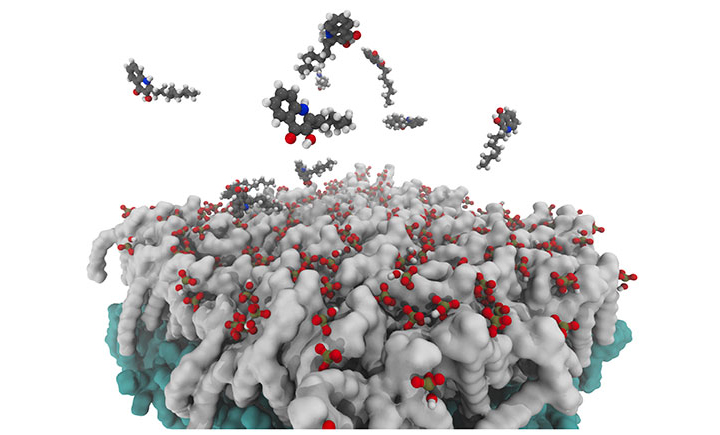Scientists surprised by how bacterium communicates
Using a modeling technique, researchers found a unique way that the communication molecules of certain bacteria, similar to what causes E. coli, enter the membrane of other bacteria.

Researchers at Binghamton University have uncovered the unique way in which a type of Gram-negative bacterium delivers the toxins that make us sick. Understanding this mechanism may help design better ways to block and eventually control those toxins.
Assistant Professor Xin Yong and graduate student Ao Li from the Department of Mechanical Engineering along with Associate Professor Jeffrey W. Schertzer from the Department of Biological Sciences published their findings in the Journal of Biological Chemistry.
The study looked at how bacteria communicate via the transportation of small molecules. Yong and Schertzer explained that communication molecules stimulate the production of outer membrane vesicles. These small packages then bud off from the surface of the bacterium and contain highly concentrated toxins.
Originally, it was hypothesized that the communication molecule induced vesicle production by controlling gene expression, but that’s not what’s going on.
Yong and Schertzer decided to work together on a model to understand more about how the communication molecule inserts itself into the membrane of bacteria in order to physically stimulate the production of these toxin delivery vehicles.
“It’s hard to see the molecular detail at that level,” explained Schertzer. “But with Dr. Yong’s expertise, we were able to build a computational model that helped us understand what actually goes on between individual molecules.”
Yong’s model allowed them to look at the details of the molecule and understand more about how it interacted with the membrane on a very short timescale.
“Our most important finding is that the communication molecule needs to enter the membrane in a very specific way,” said Schertzer. “It folds itself like a book, then will expand once it has entered the membrane.”
Schertzer and Yong explained that the communication molecule has both a head and a tail that are known to be flexible but they did not expect this type of change. In the future, they hope to test what would change in the interaction when the tail is removed or the head is modified.
While the study may sound fairly specific, it has some wider implication for all Gram-negative bacteria.
“Gram-negative bacteria likely all have similar types of communication molecules. We focused on the PQS [Pseudomonas Quinolone Signal] molecule of Pseudomonas aeruginosa because it was the first discovered and is the best studied,” said Yong. “Other Gram-negative species, such as E. coli, may be transferring their own communication molecules in a similar way.”
Learning more about how Gram-negative bacteria communicate with each other can help researchers build a stronger understanding of multispecies interactions and how to eventually control these types of high-risk infections.
“This study was a testament to how beneficial interdisciplinary work can be,” said Schertzer. “We had reached a limit with what could be done experimentally and needed Dr. Yong’s model to develop a rationale for how the molecule was interacting with the membrane. Most importantly, this work has generated a wealth of new questions that we are now continuing to investigate”
The study titled “Molecular conformation affects the interaction of the Pseudomonas quinolone signal with the bacterial outer membrane” was published online by the Journal of Biological Chemistry on Jan. 25, 2019 and was funded by the National Institutes of Health under grant number R21AI121848.

